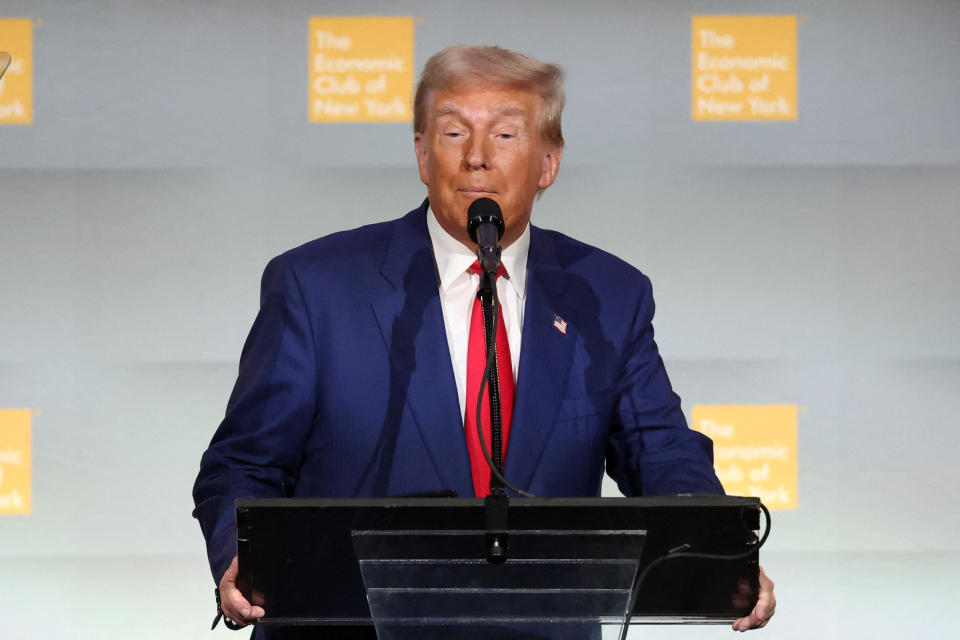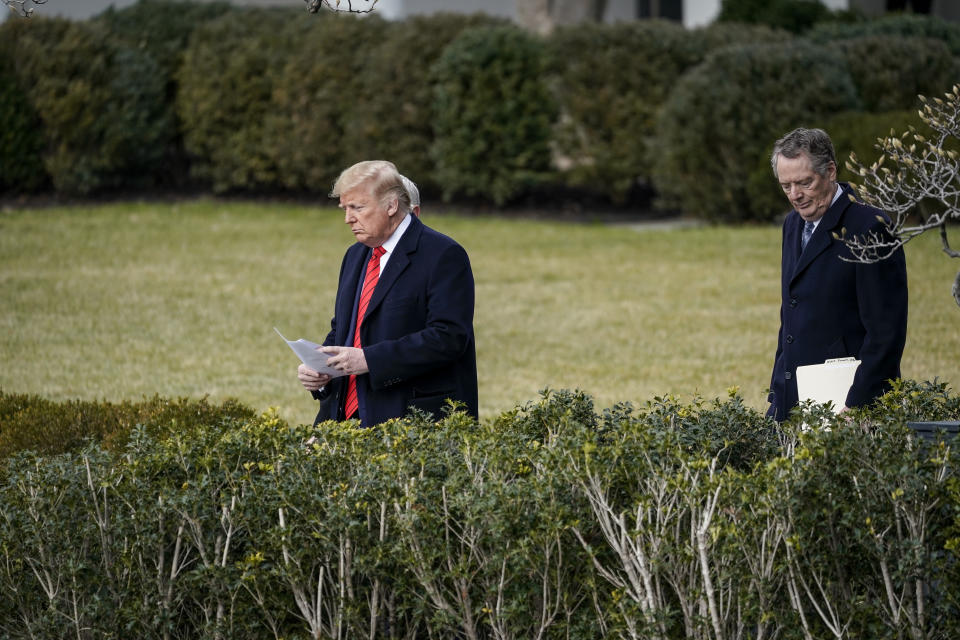Former President Donald Trump sought to deliver a more detailed economic message in a speech in New York on Thursday, drawing particular attention to his often-criticized plan for a new wave of tariffs on US imports from around the world.
“Some may call it economic nationalism, I call it common sense,” Trump told the crowd of business leaders at the Economic Club of New York.
He also declined to offer exact rates, but seemed to suggest that if elected he might even implement higher duties than he previously discussed. “I won’t quote the percentage today, but it will be a certain percentage of tariffs that will be higher than what people have heard in the past,” Trump added on Thursday.
Trump has already proposed imposing tariffs of 10% to 20% on US trading partners with higher rates of 60% on China. It’s a plan that economists have been worried about for months could spur inflation again.
The former president also offered a wide variety of other ideas in the nearly 80-minute speech and question-and-answer session.
His other proposals presented Thursday included backing a government efficiency commission first recommended by Tesla ( TSLA ) CEO Elon Musk, a new effort to cut government red tape, a decrease in the federal corporate tax rate to 15% from its current level of 21.%, a declaration of a “national emergency” to spur more oil drilling, and the rescission of certain unspent green energy funds passed in the Biden Inflation Reduction Act.

But it was when the topic turned to tariffs that Trump became most clearly animated as he defended his long-term priority first undertaken during his previous stint in the White House.
He returned to the subject again and again to push back his critics.
“Smart tariffs will not create inflation, they will fight inflation,” he said at one point in an attempt to push back against a frequently leveled criticism of his plan. Trump and his allies often note that inflation was low when he was in office from 2017 to 2021 as he implemented the tariffs at the time.
Trump aides also stressed that a re-elected Trump might be eager to implement these ideas quickly, likely without input from Congress.
“There’s certainly a lot of current law that allows tariffs to be set in various circumstances,” former Commerce Representative Robert Lighthizer told reporters before the speech.
“We saw that during our last administration and I suspect you’ll see some kind of combination of both this time as well.”
Lighthizer and other Trump allies have previously discussed different laws for his tariffs to be done quickly in 2025 and at higher levels than his previous term earned. A previously unused option is a 1977 law called the International Emergency Economic Powers Act, which allows the president to declare an economic emergency and act accordingly.

A wary audience before Trump’s message
The deep dive on Trump’s trade issue comes as the business community’s prescription of his plans continues to be a notable headwind for the president.
A new Goldman Sachs research note underscored the concerns this week when it found that, at least in terms of gross domestic product, a Kamala Harris victory with a Democratic sweep of Congress is the best outcome for economic growth.
Analysts wrote that Harris in the White House could lead to “a slight boost to GDP growth on average over 2025-2026.” But the Trump victory scenarios would affect GDP largely due to a “tariff growth hit”.
Trump aides dismissed the Goldman Sachs analysis as too politically influenced, but it’s just the latest study to highlight the potential costs of Trump’s new tariff plans, which are duties levied on companies when their goods arrive at ports of entry from the United States.
The Peterson Institute for International Economics ran the numbers and found that Trump’s ideas for 60% tariffs on China and 10% on other trading partners would lead to a typical middle-class household paying at least $1,700 more each year.
Another estimate by Brendan Duke of the left-leaning Center for American Progress is even higher. It found that a 20% tariff combined with a 60% tariff on Chinese goods could mean an additional cost of $3,900 for a typical family each year.
The latter statistic is one that Vice President Kamala Harris and her campaign have highlighted again and again in recent weeks, comparing it to a national sales tax.
However, Trump returned to the issue of tariffs again and again during Wednesday’s speech as a linchpin of his potential second-term agenda.
He said the tariffs could bring in billions and reduce the deficit. He said they would help rebuild the American auto industry. At one point, he also expressed nostalgia for a bygone era when tariffs were the main driver of U.S. revenue “before the income tax came along.”
“In short, it will be an economic renaissance,” he promised, leading to a second round of trade wars.
Ben Werschkul is the Washington correspondent for Yahoo Finance.
Click here for political news related to trade and monetary policies that will determine stock prices tomorrow
Read the latest financial and business news from Yahoo Finance
#Donald #Trump #doubles #tariff #ideas #York #business #leaders